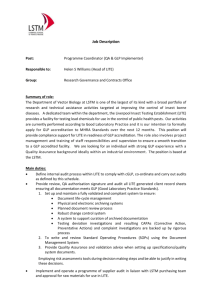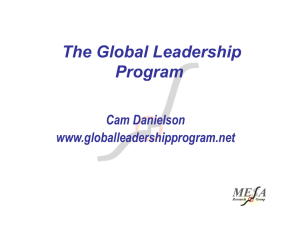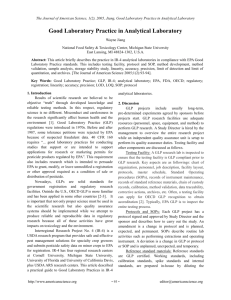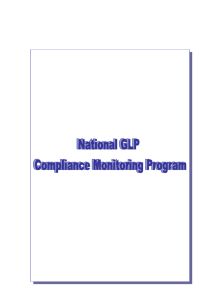HERE - GLP
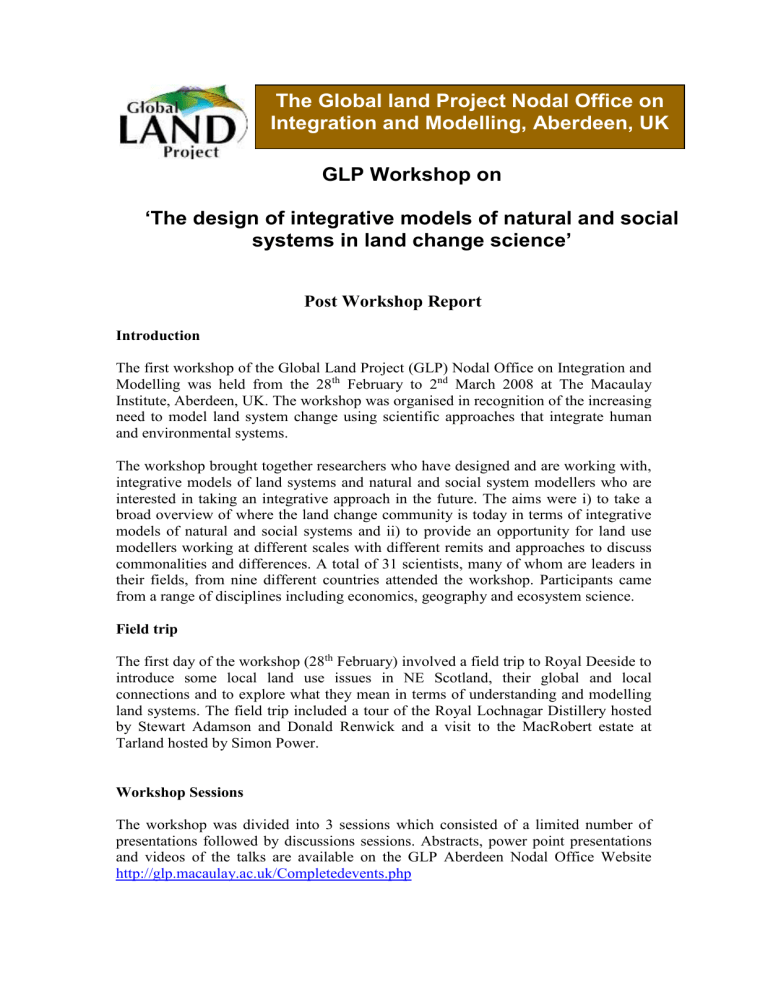
The Global land Project Nodal Office on
Integration and Modelling, Aberdeen, UK
GLP Workshop on
‘The design of integrative models of natural and social systems in land change science’
Post Workshop Report
Introduction
The first workshop of the Global Land Project (GLP) Nodal Office on Integration and
Modelling was held from the 28 th
February to 2 nd
March 2008 at The Macaulay
Institute, Aberdeen, UK. The workshop was organised in recognition of the increasing need to model land system change using scientific approaches that integrate human and environmental systems.
The workshop brought together researchers who have designed and are working with, integrative models of land systems and natural and social system modellers who are interested in taking an integrative approach in the future. The aims were i) to take a broad overview of where the land change community is today in terms of integrative models of natural and social systems and ii) to provide an opportunity for land use modellers working at different scales with different remits and approaches to discuss commonalities and differences. A total of 31 scientists, many of whom are leaders in their fields, from nine different countries attended the workshop. Participants came from a range of disciplines including economics, geography and ecosystem science.
Field trip
The first day of the workshop (28 th February) involved a field trip to Royal Deeside to introduce some local land use issues in NE Scotland, their global and local connections and to explore what they mean in terms of understanding and modelling land systems. The field trip included a tour of the Royal Lochnagar Distillery hosted by Stewart Adamson and Donald Renwick and a visit to the MacRobert estate at
Tarland hosted by Simon Power.
Workshop Sessions
The workshop was divided into 3 sessions which consisted of a limited number of presentations followed by discussions sessions. Abstracts, power point presentations and videos of the talks are available on the GLP Aberdeen Nodal Office Website http://glp.macaulay.ac.uk/Completedevents.php
This report focuses mainly on output from the discussion sessions that followed the talks with reference also to input given in the pre-workshop exercise. For discussion sessions, participants were split into four breakout groups. The salient points to come out of the groups are reported.
Session 1. What are we trying to model?
Presentations in this session included:
Integration through modelling for the Global Land Project – Richard Aspinall
Linking landscape patterns with ecological and social processes – Dan Brown
Developing integrative models using spatial and regional economic models and methods – Elena Irwin
Full model integration versus loose coupling, examples for assessing agricultural mitigation potential – Pete Smith
Discussion
In this session we explored what it is we mean when we talk about modelling the human-environment system.
All four groups agreed that for the GLP this type of modelling has to go beyond land cover and land use, giving the GLP a wider remit than LUCC, something that is expressed throughout the GLP science plan. It was acknowledged that many more research questions have arisen since LUCC, with stakeholders now asking about issues such as impacts of climate change on decisions related to land systems. One group pointed out that most of the models developed by participants at the workshop do, in fact already go further than land cover and land use.
A simple definition to come out of the discussions of what it is we are trying to model was
‘The land system, with all interactions between humans and the environment’
This definition clearly leads to questions of complexity and scale, issues that were discussed by several of the groups. Discussions around complexity considered if there is a minimum level of complexity needed for a land system model and if there are essential elements or interactions that have to be accounted for. Many groups stated that this is dependent on the research question you are trying to answer. One group suggested that essential elements included land cover, land use and land function.
The term ‘land function’ came up in both the presentations and the discussions in this session. In his presentation, Richard Aspinall spoke about land function as a coupling variable and intermediary between land cover, land use and ecosystem services. In the discussions, the need for a term that encapsulates more than the cover and use of land came up several times, with ‘land function’ being put forward in this context. Group 1 noted that in order to do this as a community we need to specify how ‘land function’ relates to land use, land cover and ecosystem services. Group 4 suggested that land function could be defined as ‘the capacity of the land to provide goods and services’.
Recommendation 1: the GLP community could usefully agree on a definition of ‘land function’
In terms of scale and dealing with the inevitable range of spatial and temporal scales involved in integrated modelling, all groups agreed that integration needs to occur across spatial and temporal scales since integration, by its definition, covers varying scales, domains and techniques. The need to give a complete picture or tell a story across the local, national, regional, continental and global scale was recognised. Other issues highlighted were the ability to identify and model feedbacks between different scales and to omit irrelevant details when moving up to a higher scale.
Some methodological issues of scaling arose during the discussions. Pete Smith’s presentation gave an example of top-down and bottom-up approaches in modelling being combined and several groups cited the potential of taking this approach in integrated models. One group advocated the idea of using a hierarchy of scales in nested models. An important point to come out of the discussions was the need to identify the complementarities and contributions of different types of modelling at different scales. This recognition could be useful in designing future integrated models of land systems.
Recommendation 2: the GLP community promotes activities that identify complementarities and contributions of different types of modelling at different scales
Session 2. Which modelling approaches should we take and why?
Presentations in this session included:
Can agent based models (ABMs) of land use bridge the gaps between process and pattern based models – Dawn Parker
MAS as a component of integrated modelling systems – Thomas Berger
Discussion
Both presentations in this session focused on agent based modelling, however the discussion session considered a variety of different modelling approaches (process based, systems dynamics, cellular automata etc.). Some of the discussion time was spent considering the place/potential of agent based modelling in integrated models of land system science. The idea that the ABM approach allows the modelling community to address processes they couldn’t address before, was put forward, whilst it was also recognised that ABM has limitations. Particular reference was made to the issue of scale and the fact that ABM as it stands, is suited to fine scale modelling with numbers of agents in the 100s at most. Many of the discussion groups noted that multiple modelling approaches are needed for multiple purposes with reference to models that take mixed approaches (SITE, Landshift) being made.
In his presentation, Thomas Berger pointed out the need for efforts in disciplinary integration to precede model integration. This idea was reconfirmed in the discussion sessions with groups citing the need for conceptualisation before the development of integrated models. Several groups moved on to discuss conceptual frameworks and common ontology to allow model comparison. In Dawn Parker’s presentation, the Mr
Potatohead framework, created to enable comparison of ABM/LUCC, was introduced. This framework allows users to trace and describe their own models using a common structure, allowing model comparison. Several of the discussion groups referred to this framework and mentioned the need for a common ontology to describe integrated models of land system science, with examples of participants at the workshop who use this approach being given; Belem, Reidsma, Parker, Gotts.
Recommendation 3: GLP activities help documentation of underlying assumptions of models using a common ontology
Discussion groups were encouraged to focus on roles and recommendations for the
GLP. Two groups suggested that the GLP create a model repository housing metadata and, where available, code for integrated land system models. A possible format would be one that was similar to the GCTE’s Soil Organic Matter Network, which houses a meta database on soil organic matter models.
Recommendations 4: the GLP creates a model repository of integrated land system models
In a similar way, it was suggested that the GLP make the community aware of existing data sets (local, regional, global) that researchers can use to test model assumptions or use in model development.
Recommendation 5: the GLP makes the community aware of relevant existing data sets for model testing and development
Session 3.What should the design of an effective integrated model include?
Presentations in Session 3 included:
Integrated socio-ecological models in land systems research: combining agentbased with stock-flow approaches in a participatory process on the municipal level – Helmut Haberl
Towards a new generation of integrated land system models – a review of modelling techniques – Rüdiger Schaldach
Discussion
The third discussion session considered not only the characteristics that an integrated model should include but also the actions that the GLP should take to facilitate such models being recognised and or developed.
From the discussions different groups felt that an integrated model should include the following for the both human and natural parts of a model:
Exogenous and endogenous drivers
Effects/impacts
Feedbacks
Multi-scale dynamics
The following characteristics for an integrated model of land system science were put forward:
A clear definition of purpose
A consistent ontology
A link between the design and the model purpose/message
Be validated, calibrated and verified
Be explicit
Lead to outcomes
Deal with cross-scale interactions (spatial and temporal)
Cover the three domains of interaction (domain, scale and technique)
Take a complex systems approach
Model thresholds
Be built on conceptual integration
Include qualitative and quantitative methods
In this session, groups were asked specifically to come up with further recommendations for ways in which the GLP can facilitate the development of improved integrated models of land systems. The idea of a repository of models was mentioned again with the idea of having GLP endorsed, accredited or affiliated models being given. Some of the other recommendations for the GLP are listed below:
Act as an information clearing house and in doing so highlight knowledge gaps
Promote model transparency
Promote a common conceptual model
Hold a hands on modelling workshop
Hold capacity building model training workshops in Africa and Asia to increase the global impact of the GLP
Build on the Mr PotatoHead framework
Link with other EU/Global framework projects
Identify research priorities and communicate this to funding agencies
List scientists, institutions and available data to help GLP members find project partners
Ensure there is a balance between the human and natural systems in the efforts of the GLP (some felt that there is a current bias to the human part)
Next Steps and Publications
The group as a whole identified 2 potential special issues; one dealing with some of the larger methodological questions to have come out of the workshop and another looking at specific case studies which relate to integrated models of land systems
having been used or developed. A list of potential target journals was drawn up and participants felt it may be useful to have the same list available on the GLP Nodal
Office Website as a list of journals likely to have articles relevant to integrated modelling of land systems. The Aberdeen GLP Nodal Office is coordinate production of publications.
The idea of a model repository is being considered by the GLP Aberdeen Office.
Workshop participants and the GLP IPO will be consulted on the best way to proceed with this.
